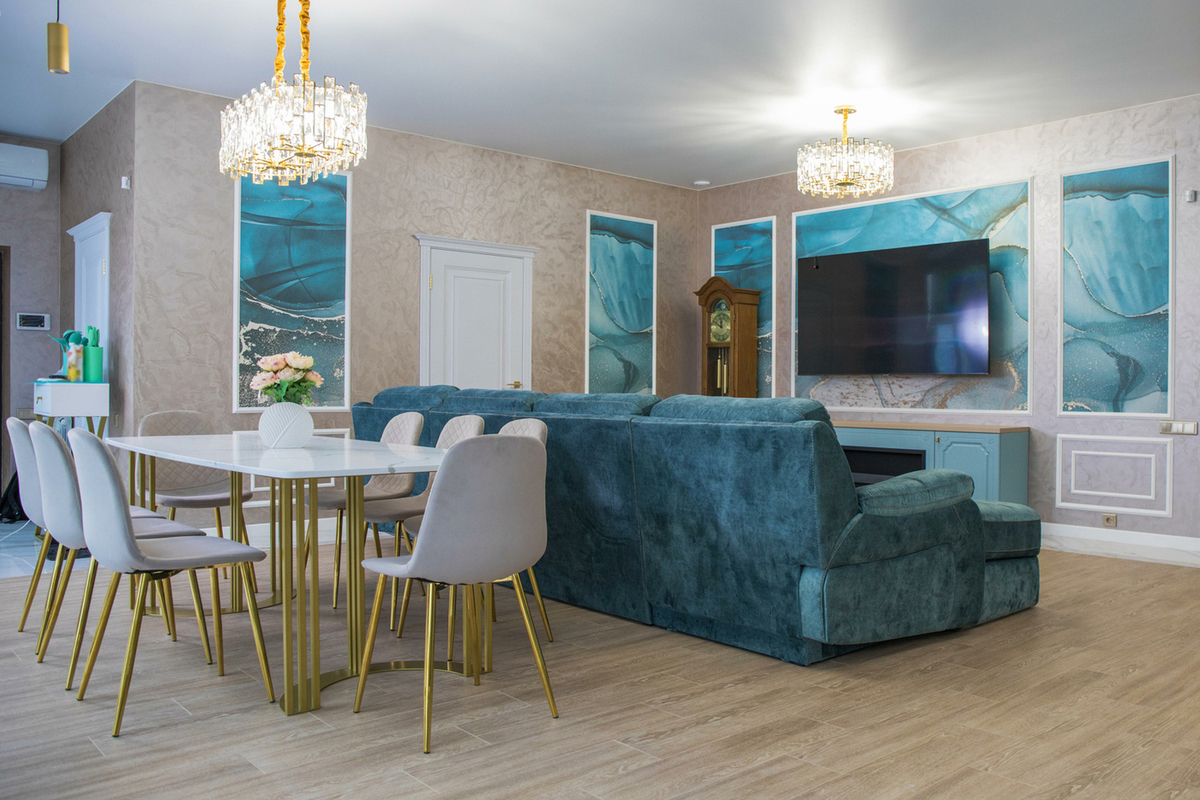Furniture buyers turn away from luxury
[ad_1]

What steel styles do Russians prefer?
For a long time, furniture manufacturers and large retailers managed to keep prices down for kitchens, beds, tables and chairs. However, the recent jump in prices at gas stations and another wave of ruble depreciation have increased the costs of furniture factories that depend on imported fittings, fabrics, varnishes and paints. MK found out how much the average bill will grow and where furniture fashion will go.
According to the Association of Furniture and Woodworking Industry Enterprises (AMDPR), in 2023, furniture production in the Russian Federation increased in volume terms by 33% year-on-year, to 66.7 million units, and in monetary terms by 23%, to 438 billion rubles. The industry hasn’t had such outstanding performance since at least 2005. The record, according to experts, was due to increased activity in the primary housing market. It’s no secret that many developers sold new apartments with furniture.
At the same time, the price tags did not change for a long time. “Since January 2023, for several months in a row, the average bill remained at 39 thousand rubles, but by December it grew to 45 thousand rubles,” Anastasia Rogacheva, director of the e-commerce department of the furniture company Lazurit, told MK. According to her, large furniture retailers tried to keep prices at the same level for as long as possible, and also regularly launched promotions and discounts for buyers of retail chains and online stores.
At the same time, the national furniture industry still depends on imported components and materials. “95% of metal fittings come to us from abroad. Our furniture manufacturers also receive a significant portion of fabrics, varnishes and paints from foreign partners,” said Alexander Shestakov, general director of the First Furniture Factory. Therefore, the March weakening of the ruble exchange rate, in his words, will inevitably lead to an increase in product prices. Thus, the share of fittings in the cost of cabinet furniture can reach 40%. Manufacturers of upholstered furniture also use a lot of imported fittings and fabrics. “But upholstered furniture that uses domestic spring blocks is much less affected by the weakening of the ruble. Also, companies that produce simple pieces of furniture – stools, tables, beds – do not depend much on imported components,” the expert added.
In addition to exchange rate volatility, other factors also influenced production costs. “In conditions of personnel shortage, wages have increased, costs for servicing production equipment, energy supply and logistics have increased,” said Sergei Shikhov, general director of the interior company Mr.Doors. As a result, enterprises were forced to increase selling prices to compensate for increased costs.
Price movements expectedly changed consumer preferences. The “expensive-rich” interior using luxurious materials and expensive pieces of furniture and decor has gone out of fashion. When choosing furniture, most Russians prefer universal modern styles that suit any interior. “The leader in online sales has become the brutal and strict loft style. Classics and Provence accounted for 18% and 15% of requests, respectively, and Scandinavian style – 14%. There were about 6% of requests for other modern styles, hi-tech and minimalism along with eco-minimalism,” noted Denis Egorov.
“The popularity of the modern style is understandable; it is ideal for those who want a practical interior without the hassle. This style is without unnecessary details, does not require a lot of time for cleaning, and the color palette conveys a feeling of calm,” explains the specialist.
Today, convenience and functionality come to the fore. “Modular upholstered furniture, which is easy to combine and customize, is becoming increasingly popular. The trend is simple shapes with smooth corners and smooth lines. They give the space more comfort and make the home safe and cozy. Cool white and gray in the interior have given way to warm beige and various shades of wood, everything is focused on maximum comfort. Terracotta, mustard and green shades are also trending,” says the analyst.
Experts believe that modern styles will dominate in the coming months. Most city dwellers are interested in universal furniture that is highly reliable and compatible with other interior items.
But among owners of country houses, interest in such trends as Provence, retro and country may awaken. The fact is that spacious country premises and atypical layouts encourage greater individuality in the choice of furniture, experts believe.
According to Rogacheva, it is unlikely that it will be possible to avoid a rise in furniture prices in 2024 due to factors beyond the control of manufacturers: prices for raw materials are rising, and logistics costs are increasing. According to her forecast, the cost of furniture for the end buyer, and with it the average bill, may increase by 10–15% this year.
[ad_2]
Source link






